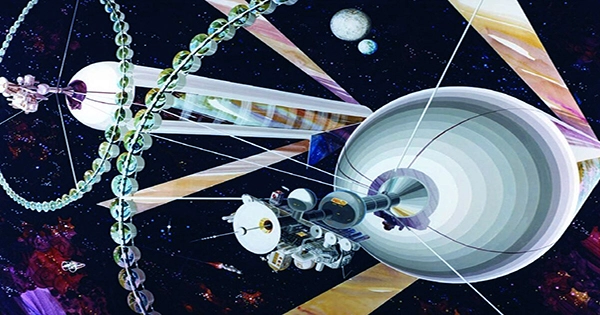Many of us wish to travel across the stars, but this is a long-term ambition for humanity. However, technology is being developed to send probes across interstellar distances in tens of years rather than thousands of years, and a new study shows that having living passengers aboard those particular vehicles could be fascinating. Moreover, they are unique. These spaceships will accelerate to a fifth of the speed of light by strong lasers and will weigh little more than 1 gram (0.04 ounces). They are not built with people in mind. They would get to Proxima Centauri, the Sun’s closest neighbor, in less than a quarter of a century.
While humans would be unable to travel on such a thin vessel, other living species would be able to. In addition, transmitting them could be beneficial to science. They could be used to investigate the impact of rapid interplanetary travel on life. Potential expeditions would necessitate radiation-tolerant species that can enter stasis, according to the journal Acta Astronautica. Tardigrades and C. elegans, a species of worm commonly utilized in scientific research, are two such animals. Both candidates have spent time in space, both inside and outside the International Space Station, in experiments.
In a statement, co-author Professor Joel Rothman of UC Santa Barbara said, “We may question how well they retain learned behavior when they’re flying away from their terrestrial origin at near the speed of light, and test their metabolism, physiology, neurological function, reproduction, and aging.” “Most tests that can be carried out on these animals in a lab can be carried out onboard the StarChips as they zip through space.” The biological impacts of such extended excursions on animals could extrapolate to human effects.
“We could start thinking about how to create interstellar transports, whatever they are,” Rothman added. In addition, the paper raises certain ethical concerns. First, it considers the dangers of transporting Earthly life to another star system in the event that it becomes contaminated. Planetary protection is a priority, and given the size and scope of the craft and plan, there is no danger. Even if it collided with a planet, it would vaporize before reaching the surface.
The other, on the other hand, is even more philosophical. Should life on Earth be purposefully launched into the cosmos in order to spread to other worlds? This theory, known as Directed Panspermia, has been proposed as a mechanism to explain the origin of life as the result of a civilisation scattering “seeds” around the cosmos.
“Some individuals have pondered and published on concepts like ‘is the universe a lab experiment from some advanced civilization,'” said co-author and UC Santa Barbara professor Philip Lubin. “As a result, individuals are inclined to consider advanced civilizations. Questions are useful, but answers are even more so. We’re only pondering these questions right now since we don’t know the solutions.” The answers are not urgent right now, but they are worth considering now, rather than waiting until we have the technology to send life across the stars.
















